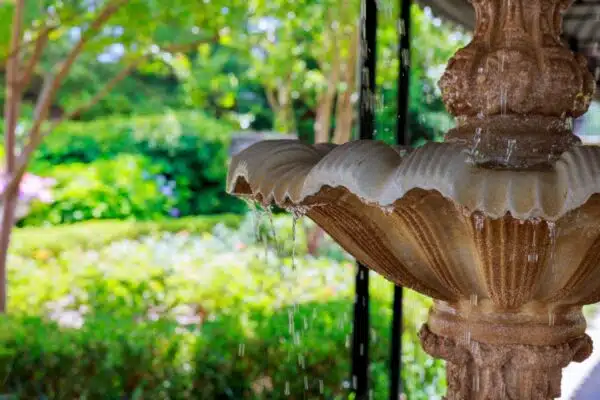A Complete Guide to Choosing the Perfect Outside Water Fountain
October 8, 2018
Are you thinking about installing an outdoor water fountain?
Although nobody understands exactly how it works, the therapeutic benefits offered by the sound of running water are well-known.
Likewise, getting outside comes with a whole set of benefits. Installing an outside water fountain is a clever way to combine the power of both into one soothing, healing package. If you get it right, that is.
Be sure to consider the following if you want to reap the benefits and avoid the pitfalls of installing an outdoor water feature.
Consider Space Constraints
A fountain is a major focal point in your yard and should fit in seamlessly with your landscaping.
Too large a fountain will make your garden looked cramped. A fountain that’s too small won’t have the visual impact you’re looking for.
The location of the fountain will also have an effect on what type of fountain will fit in both practically and aesthetically.
To help you decide, you can take a photograph of your yard (with your residence in the background), and we can use a photo editing program to insert different kinds of fountains in front of your house. This will give you an idea of what the final outcome might be.
It’s a good idea to print your final arrangement and take it along with you when you purchase your fountain. In this way, an expert sales consultant will be able to tell what size fountain you need at a glance.
Types of Water Fountains

The next step is to choose the right type of fountain for your space. Although you may have an idea of what you want, this could fly out the window when you see the huge variety available.
It makes sense to narrow down your choices before you start shopping to avoid becoming overwhelmed or choosing a gorgeous fountain that’s impractical. There is a huge variety to choose from, here’s a taster.
You should consider the style of your house or garden when choosing a design. A very ornate statue fountain will not suit a house with a very modern design. Rather look at fountains with a more contemporary design.
If you don’t have a lot of outdoor space available, you could consider a corner or wall mounted fountain.
Apart from shape and size, the material used to construct your water fountain also has a huge effect on the final look.
Fountain Materials
Granite fountains are extremely versatile, can withstand very cold temperatures, and fit in anywhere. These kinds of fountains are very heavy and last a lifetime.
Cast stone fountains are also very heavy, but will only last a short amount of time, when compared to a granite fountain which can last generations.
Choose your location carefully before installing them. You only want to do it once.
Fiberglass fountains can mimic the look of granite and stone but are much lighter and cheaper. However, they won’t last nearly as long — since over time the fiberglass gets brittle from UV damage, and also the fountain is so light in weight, it can actually blow away in a strong wind.
Bronze and copper fountains add a little glimmer and really stand out in lush gardens. They’ll need a little extra cleaning to keep them looking their best though.
Ceramic and porcelain fountains are fragile and are best used as patio water features, where they are not exposed to the elements — and can be brought inside for the winter (if you have freezing temps).
Other Aesthetic Elements
Discreet lighting will really make decorative fountains stand out in the dark and is a must if you spend a lot of time entertaining outside at night.
Amber or blue lights create a relaxed ambiance, while bright white lighting is dramatic and energizing. Using different colored light bulbs (or colored lenses over your warm white bulbs) can give your fountain a festive feel.
Paving can do much to highlight your fountain and give it added appeal. Consider a walkway up to the fountain or a paved seating area alongside it. Flowers and shrubs are a beautiful addition to any outdoor fountain setting.
It is important to choose the correct type of pump to achieve the aesthetic you are looking for. Always opt for the highest quality pump you can find.
Housekeeping Aspects
Check with your local municipality about any necessary permits before you tap into their water line to install your fountain. There may also be regulations and restrictions for operating a fountain depending on your location.
Most outdoor fountains have little impact on water use. This is because they have recirculating pumps which circulate the same water over and over until it evaporates.
When choosing a fountain, remember you will need to carry out routine maintenance on it.
You should clean your fountain at least once a month, and you will need to winterize it before the first big chill. This involves draining the fountain and shutting off its water supply as well as properly draining the water pipes which feed the fountain so they don’t explode when the ground freezes.
There is no need to cover your fountain if it is made of granite, but you should take the water pump out of the fountain before winter, clean it, then place it in a bucket of water in a warm location until spring (when are you start the fountain back up).
If your fountain is NOT made of granite, but rather a more porous substrate like Limestone, Travertine, Marble, Cantera or Concrete (and you live in a climate with Freeze/Thaw seasons), you absolutely need to cover it prior to each winter until spring, or it WILL not last very long at all.
Wrap the porous fountain with a blanket to soak up any moisture that collects on the inside of the tarp if it sweats from humidity, then tarp the fountain very securely over the blanket. This makes sure there are no obvious holes in the tarp. This may extend the life of your porous fountain for several years, but the usable lifespan for your fountain will still not compare to a granite fountain.
Make sure you don’t block off your access to the fountain with plants or other obstacles.
Large fountains should be clear all the way around for efficient maintenance. All outdoor water fountains can become blocked by falling leaves or seeds from surrounding plants or trees, which will clog up the intake on the pump and cause the fountain to slow down or stop running completely.
Your fountain must have access to water and energy sources to operate, so keep this in mind when you choose a spot for it.
Installing Your Outside Water Fountain
If you decide to order a large, heavy fountain, you’ll need expert help with delivering and installing it. This means a whole new set of logistics.
Where will the delivery vehicle enter to offload your fountain? Is there enough space to move it into position?
Typically, you need at least an 8′ travel path to move the heavy parts into place. Make sure it does not go up a steep incline or decline or over any sidewalk or paver tiles which could possibly crack with heavy machines moving across them.
(Otherwise, if your proposed fountain location is very enclosed, a crane may be required to set the fountain into place.)
Be sure to choose a fountain that fits in with these practical considerations.
Unless you are an experienced handyman, it is a good idea to get help installing any kind of fountain. The process can be complicated, and you will need a qualified electrician to do the wiring for you.
Where to Find the Perfect Fountain
When you have a good idea of what type of outside water fountain suits your needs and budget, get in touch to discuss your options.
If you’re still undecided, you could consider a custom-designed fountain that precisely matches all your expectations.
